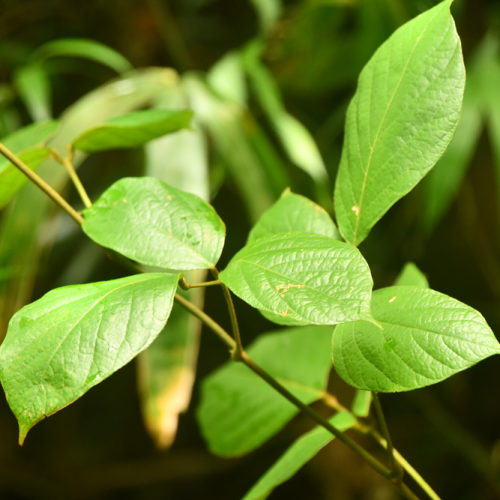Botanical Description
A twiner. Branches terete, glabrous, reddish-brown or brown when dry, the branchlets slender, nearly black when dry, sparingly pubescent with appressed-cinereous hairs. Leaves alternate, pinnately trifoliate. Petioles 6 to 10 cm long, slightly cinereous-pubescent; stipules narrowly lanceolate, about 3 mm long; leaflets membranaceous, ovate, dark olivaceous when dry, somewhat shining, 10 to 15 cm long, 6 to 8 cm wide, slenderly acuminate, slightly pubescent on the upper surface, ultimately glabrous, the lower surface sparingly pubescent, the terminal one equilateral and subacute at the base, the lateral ones inequilateral, rounded to subacute; stipels linear, up to 5 mm long.
Distribution Ecology
Tayabas, Quezon, Samar. Native to Philippines. Low elevation, along streams, forest edges, and secondary forests.
Other Economic Uses
The seed is used to treat diarrhea (Wiriadinata et al. 2016)
Volume Estimate
No information available

